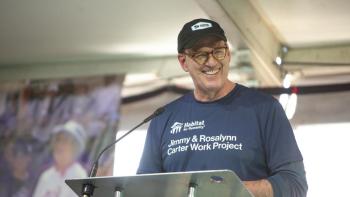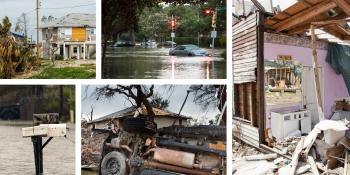Jonathan Reckford speaks with AP News about his two decades with Habitat for Humanity, from the natural disasters that widened the scope of Habitat’s work to his relationship with the late President Carter, continuing the legacy of the Carter Work Project and how Habitat is working in the U.S. and around the world to ensure everyone has a safe, affordable place to call home. See some of the highlights below, and check out the full article on AP News.
Speaking on the Indian Ocean tsunami and Hurricane Katrina, the catalyzing disasters that caused Habitat to expand its work so quickly, Reckford said,
“It was an inflection point ... Those two giant disasters forced Habitat to change in some ways that I think had long-term benefits. We were designed as a grassroots movement to build a few houses in thousands of locations. Suddenly, we needed to work at scale in a few countries in Asia and then across the Gulf Coast. I’m really proud of these enormous efforts.”
“One thing we certainly see everywhere in the world — global North or global South — is it’s 5 to 7 times cheaper to invest in mitigation than it is to fix stuff after the disaster. Another thing for the public to know is about 80% of the funds after a big disaster go to the relief effort. You certainly need all of that relief effort. But then there’s very little left for long-term recovery. And the practical reality after these big disasters is that it’s a 10-year cycle, a 15-year cycle to really come back.”
If you go back to the housing crisis, lots has been written about what went wrong and how that sort of corrupted the whole housing value chain. But what really happened, in my view, is if you look at the small builders or the big builders after the housing crisis, the big builders got recapitalized and came back. The small builders didn’t. And they represented, depending on the market, 50-60% of the housing supply.
— Jonathan Reckford, CEO of Habitat for Humanity International


